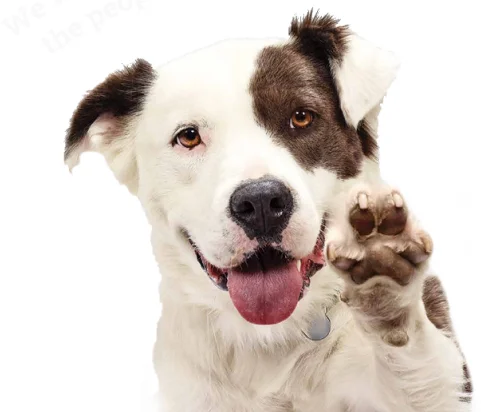Dictyocaulosis
12
This is a worm disease of ruminants and less frequently of ungulate mammals, caused by a round helminth of the family Dictyocaulidae. Dictyocaulosis of domestic ruminants, wild ruminants and ungulates is distinguished. The parasite is localised in large and medium bronchi, less frequently in trachea and intestine.
Dictyoaculosis of domestic livestock (cows and calves, sheep and goats)
In domestic ruminants, the causative organisms are:
Dictyocaulus filarial - this species parasitises sheep, goats, camels and some wild ruminants.
D. Viviparous - parasitises cattle
D. Arnfield i- parasitises ungulates
D. Cameli - parasitises camels
Developmental biology
Larvae migrate to the lungs, where they reach sexual maturity. The adult parasite lays eggs in the bronchi of ruminants, which are transported with bronchial mucus into the oral cavity and swallowed by the animal. In the small intestine, 1st stage larvae hatch from the eggs and are released into the external environment together with faeces. In the external environment they make two moults and become invasive (ready to infect). Animals become infected with helminths in pastures, watering holes, etc.
Symptoms
Due to the development of the parasite, a dry painful cough is noted at the beginning of the disease, changing to a moist cough. From the nasal cavity, serous and mucous discharge, breathing is shallow and rapid. Because of helminths, the epithelial cells of the bronchi are destroyed, mucus accumulates, and in this environment develops pus microflora, which leads to purulent bronchopneumonia. Depending on the intensity of larvae migration in the submucosal layer of the intestine, digestion is disturbed, diarrhoea and faeces with blood occur.
Dictyoaculosis of wild ruminants (deer, etc.)
Only 2 species parasitise deer and some other commercial ruminants:
D.eckerti - localise in the large and medium diaphragmatic bronchi, or in the posterior lobes of the lungs,
D.murmanensis - parasitises only in small bronchi.
More often the disease with these parasites is chronic and accompanied by emaciation of the animal. Development and infection occurs in the same way as in domestic ruminants.
Symptoms
Similar to cattle (cattle), but have a number of features. Difficult breathing, shortness of breath, wheezing, groans, groans are registered. During coughing, deer arch their back, stretch their neck, pick up their belly, lower their head to the ground, and open their mouth. Animals become thin, horn growth and moulting slow down, wool loses its lustre, takes a different colour. During movement, coughing increases.
Drugs for treatment of dictyoaculosis
For treatment, drugs of the group of ivermectin are used, both for ingestion and in injectable form.
Dictyoaculosis of domestic livestock (cows and calves, sheep and goats)
In domestic ruminants, the causative organisms are:
Dictyocaulus filarial - this species parasitises sheep, goats, camels and some wild ruminants.
D. Viviparous - parasitises cattle
D. Arnfield i- parasitises ungulates
D. Cameli - parasitises camels
Developmental biology
Larvae migrate to the lungs, where they reach sexual maturity. The adult parasite lays eggs in the bronchi of ruminants, which are transported with bronchial mucus into the oral cavity and swallowed by the animal. In the small intestine, 1st stage larvae hatch from the eggs and are released into the external environment together with faeces. In the external environment they make two moults and become invasive (ready to infect). Animals become infected with helminths in pastures, watering holes, etc.
Symptoms
Due to the development of the parasite, a dry painful cough is noted at the beginning of the disease, changing to a moist cough. From the nasal cavity, serous and mucous discharge, breathing is shallow and rapid. Because of helminths, the epithelial cells of the bronchi are destroyed, mucus accumulates, and in this environment develops pus microflora, which leads to purulent bronchopneumonia. Depending on the intensity of larvae migration in the submucosal layer of the intestine, digestion is disturbed, diarrhoea and faeces with blood occur.
Dictyoaculosis of wild ruminants (deer, etc.)
Only 2 species parasitise deer and some other commercial ruminants:
D.eckerti - localise in the large and medium diaphragmatic bronchi, or in the posterior lobes of the lungs,
D.murmanensis - parasitises only in small bronchi.
More often the disease with these parasites is chronic and accompanied by emaciation of the animal. Development and infection occurs in the same way as in domestic ruminants.
Symptoms
Similar to cattle (cattle), but have a number of features. Difficult breathing, shortness of breath, wheezing, groans, groans are registered. During coughing, deer arch their back, stretch their neck, pick up their belly, lower their head to the ground, and open their mouth. Animals become thin, horn growth and moulting slow down, wool loses its lustre, takes a different colour. During movement, coughing increases.
Drugs for treatment of dictyoaculosis
For treatment, drugs of the group of ivermectin are used, both for ingestion and in injectable form.
Была ли статья полезной?
Да
 Нет
Нет



ВНИМАНИЕ! Названия препаратов приведены в информационных целях. Любые лекарства допустимо давать питомцу только по назначению ветеринарного врача.

